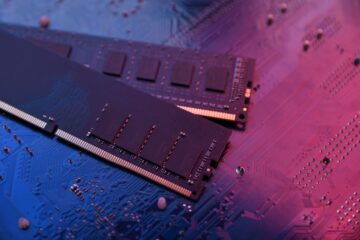Rotary Actuator: What Is It


In the world of mechanical and electrical engineering, there are a lot of tools used, and one of them is called the rotary actuator. This type of actuator stands out because it creates a torque or rotary movement.
The most basic type of actuator is known to be totally mechanical. It brings out a linear motion in one way, which leads to the rotation.
When you head to the market, the type of actuator used a lot by people are those electrically powered types. Not every actuator is powered by electricity; some are powered using hydraulic or pneumatic power. Some end up using energy that was stored in their springs.
The kind of movement that an actuator makes can be said to be either movement in a fixed angular position, which can be seen in stepper motors or servomotors, or the continuous rotation type that is seen in an electric motor.
What this means is that the motion made by an actuator differs from one type to another. The one seen in an electric motor is different in the motion seen in a servomotor or even stepper motors.
There is another type of motor that is unlike the others because it doesn’t create any type of rotation. This type of rotary actuator is called the torque motor. What it does since it can’t create a rotation is to make a precise torque. When this is created, it leads to either rotation of some sort or may be balanced out by an opposing torque. With the torque motor, there are two outcomes.
An opposing torque may decide to balance it out, or rotation is made once the precise torque has occurred.
Stepper motors
Like earlier mentioned, some rotary actuators are powered by electricity, and the stepper motor is one of them. This type of electric motor is designed to rotate in discrete steps using a fixed size. When it moves in those discrete steps, it does it using a fixed amount of size that doesn’t change.
This type of rotary actuator can help to create continuous rotation, which is done at a speed that has been controlled. Its alternative is to have the movement done at a controlled angular size.
When you mix the stepper with any of the following:
A datum sensor that is currently at zero position or
Position encoder,
You can easily have the motor swinging at any angular position. This way, it works like a rotary actuator.
Servomotors
The servomotor is a rotary actuator that comes with a number of parts like:
The motor: In some cases, this is electrical in nature, and in other cases, it can be fluid power motors. The type of motor used a lot in servomotors is the electrical motor, though its counterpart, the fluid power motors can suffice;
Gear train:
This part has a job of reducing the numerous rotations that the motor carries out to a greater torque rotation;
Position Encoder
This is a part that finds the output shaft’s position, as well as an inbuilt control system.
The servo receives an input control signal, which shows what the right output position is. If it is noticed that a disparity occurs between the position that was dictated, and that of the encoder’s position, then an error signal comes up. This forces the train gear as well as the motor to continue to rotate till whenever the encoder is now in a position that was commanded earlier. The encoder has to align well.
There are a lot of servos, but the cheapest of them is quite common. It is used a lot for those radio-controlled models.
Uses
Rotary actuators can be used in a lot of scenarios. There are different types of rotary actuators, and they have different power, sizes, as well as operating speed.
One of them is the zero power actuator that is used as display devices. An example is the air core gauge. Other types are valve actuators that are used in controlling process and pipeline valves. This type of rotary actuator is used a lot in the world of petrochemicals.
Some actuators are used in large scale civil engineering projects like dams and sluice gates.











